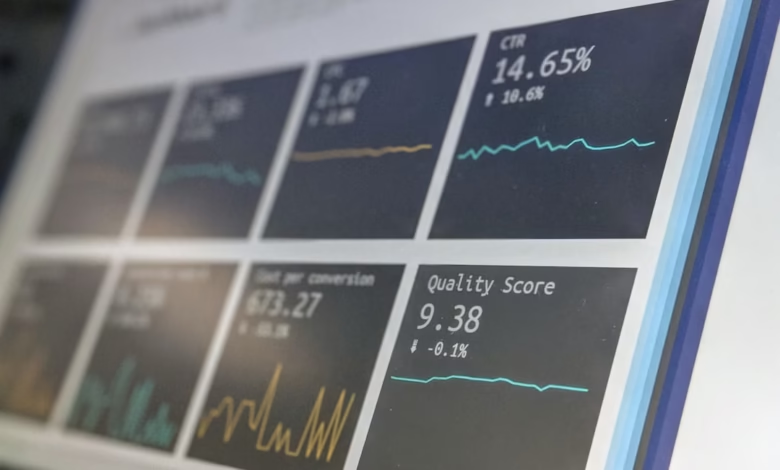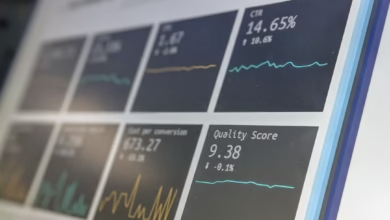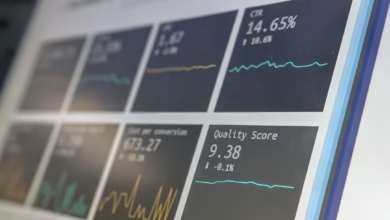Mastering Fundamental Analysis: Essential Insights for Informed Trading Across Stocks, Forex, and Options

In the dynamic world of trading, where decisions must be made swiftly and accurately, understanding the financial health of assets is paramount. Fundamental analysis serves as the backbone of informed trading strategies, allowing investors to assess the intrinsic value of various assets, from stocks and forex to options and commodities. By delving into key metrics and financial indicators, traders can uncover the underlying factors that influence market movements, equipping themselves with the knowledge needed for successful trading.
As markets continuously evolve, integrating fundamental analysis with technical analysis can significantly enhance trading psychology and risk management, offering a comprehensive approach to navigating the complexities of various trading environments, including day trading, swing trading, and crypto trading. This article will explore the essentials of fundamental analysis, highlight crucial metrics for evaluating financial health, and discuss how to blend these insights with technical strategies for a more robust trading experience. Whether you are engaged in algorithmic trading, margin trading, or social trading, mastering fundamental analysis is essential for developing effective trading strategies and achieving long-term success in the financial markets.
- 1. Understanding Fundamental Analysis: The Backbone of Informed Trading Strategies
- 2. Key Metrics for Evaluating Financial Health: A Guide for Stock, Forex, and Options Trading
- 3. Integrating Fundamental and Technical Analysis: Enhancing Your Trading Psychology and Risk Management
1. Understanding Fundamental Analysis: The Backbone of Informed Trading Strategies
Understanding fundamental analysis is essential for traders seeking to make informed decisions across various markets, including stock trading, forex trading, and commodities trading. At its core, fundamental analysis involves evaluating the financial health of an asset by examining various economic indicators, financial statements, and broader market conditions. This analytical approach serves as the backbone of informed trading strategies, allowing traders to assess the intrinsic value of an asset and make educated predictions about its future performance.
In the world of trading, whether it be day trading, swing trading, or more specialized forms like options trading and futures trading, understanding the fundamentals can provide a significant edge. For instance, a trader engaged in crypto trading might analyze blockchain technology developments or regulatory news to gauge potential price movements. Similarly, in index trading, a thorough assessment of the underlying companies’ earnings reports and economic indicators can inform trading decisions.
Moreover, fundamental analysis complements technical analysis, which focuses on price movements and chart patterns. While technical analysis may reveal short-term trends, fundamental analysis digs deeper into the reasons behind those trends. This dual approach can enhance risk management strategies, enabling traders to navigate volatility more effectively.
For those delving into more advanced trading methods like algorithmic trading or high-frequency trading, integrating fundamental analysis can optimize trading algorithms by ensuring they are based on solid economic data rather than mere price fluctuations. In addition, traders involved in copy trading and social trading can benefit from understanding fundamental analysis to choose strategies that align with their risk tolerance and market outlook.
As traders engage in leverage trading or margin trading, being well-versed in fundamental analysis becomes even more critical. Understanding the financial health of assets can help manage the risks associated with increased exposure. This is particularly vital in derivatives trading, where the potential for both gains and losses is magnified.
In conclusion, mastering fundamental analysis equips traders with the tools needed to navigate the complexities of various markets, from energy trading to binary options and arbitrage trading. By grounding their trading strategies in solid financial evaluation, traders can enhance their trading psychology and make more informed decisions that lead to long-term success in the dynamic world of online trading platforms.
2. Key Metrics for Evaluating Financial Health: A Guide for Stock, Forex, and Options Trading
When it comes to evaluating the financial health of assets for informed trading, understanding key metrics is essential for success across various trading markets, including stock trading, forex trading, options trading, and more. These metrics provide traders with a comprehensive view of an asset's performance, allowing for better decision-making when developing trading strategies. Here are some of the most important metrics to consider:
1. **Earnings Per Share (EPS):** EPS is a crucial indicator of a company's profitability. It shows how much money a company makes for each share of its stock, making it vital for stock trading. A higher EPS often indicates better financial health, which can influence trading decisions in both day trading and swing trading strategies.
2. **Price-to-Earnings (P/E) Ratio:** This metric compares a company's current share price to its EPS. The P/E ratio helps traders assess whether a stock is overvalued or undervalued, crucial for making informed trades in the stock market. A lower P/E may suggest an undervalued stock, making it appealing for options and futures trading.
3. **Return on Equity (ROE):** ROE measures a company's ability to generate profits from shareholders' equity. A high ROE indicates efficient management and strong financial health, making it a key factor for traders in both leveraged trading and margin trading environments.
4. **Debt-to-Equity (D/E) Ratio:** This ratio assesses a company's financial leverage by comparing its total liabilities to shareholders' equity. A lower D/E ratio suggests a more financially stable company, which is essential for risk management when engaging in derivatives trading or trading with high leverage.
5. **Current Ratio:** This liquidity metric compares a company's current assets to its current liabilities, providing insights into its short-term financial health. A current ratio above 1 indicates that a company can cover its short-term obligations, making it a vital consideration for commodities trading and index trading.
6. **Free Cash Flow (FCF):** FCF indicates how much cash a company generates after accounting for capital expenditures. Positive FCF shows that a company can invest in growth, pay dividends, or reduce debt, making it an important metric for traders interested in long-term investments, such as ETF trading and crypto trading.
7. **Market Capitalization:** This metric reflects the total market value of a company's outstanding shares. Understanding market cap helps traders gauge the size of a company and its potential for growth, which is particularly useful for both social trading and algorithmic trading strategies.
By analyzing these key metrics, traders can enhance their market analysis and make informed decisions that align with their trading psychology and risk tolerance. Whether you're involved in high-frequency trading, scalping, or arbitrage trading, a solid grasp of these financial indicators will significantly improve your trading outcomes.
References:
– Investopedia. (2023). *Key Financial Ratios*. Retrieved from [Investopedia](https://www.investopedia.com)
– Yahoo Finance. (2023). *Understanding Earnings Per Share*. Retrieved from [Yahoo Finance](https://finance.yahoo.com)
– Morningstar. (2023). *Return on Equity Ratio*. Retrieved from [Morningstar](https://www.morningstar.com)
– Financial Times. (2023). *Debt-to-Equity Ratio Explained*. Retrieved from [Financial Times](https://www.ft.com)
3. Integrating Fundamental and Technical Analysis: Enhancing Your Trading Psychology and Risk Management
Integrating fundamental and technical analysis is crucial for traders across various markets, including stock trading, forex trading, and crypto trading. By combining these two approaches, traders enhance their trading psychology and improve risk management strategies.
Fundamental analysis focuses on evaluating the financial health of assets by examining economic indicators, company earnings, and market conditions. This method helps traders understand the intrinsic value of an asset, which is essential for making informed decisions in day trading, swing trading, or even long-term investments like ETF trading and commodities trading.
On the other hand, technical analysis involves studying price patterns and market trends using charts and indicators. This approach is particularly beneficial for traders engaged in high-frequency trading, scalping, or algorithmic trading, as it allows them to identify entry and exit points based on historical price movements.
By integrating both analyses, traders can develop a more comprehensive market analysis framework. For example, while technical indicators may suggest a potential upward trend in a stock, fundamental analysis can confirm whether the price movement is supported by strong earnings or favorable market conditions. This alignment between the two analyses aids in reducing emotional decision-making, which is vital for effective trading psychology.
Moreover, risk management becomes more robust when both analyses are employed. Traders can set more informed stop-loss levels and take-profit targets based on a combination of technical signals and fundamental insights. For instance, in derivatives trading or margin trading, understanding the underlying asset's fundamentals can help traders assess the potential impact of market volatility on their positions.
In conclusion, integrating fundamental and technical analysis not only enhances trading strategies but also fosters a disciplined trading mindset. Whether you are engaged in binary options, arbitrage trading, or social trading, leveraging both analyses can lead to more informed decisions and improved risk management in the dynamic world of online trading platforms.
In conclusion, mastering fundamental analysis is essential for traders seeking to evaluate the financial health of assets and make informed trading decisions. By understanding the core metrics that define a company's performance, you can enhance your stock trading, forex trading, and options trading strategies, whether you're day trading, swing trading, or exploring the world of crypto and commodities trading. Integrating fundamental analysis with technical analysis not only sharpens your trading psychology but also strengthens your risk management practices, ensuring you navigate the complexities of the market with confidence.
As the trading landscape continues to evolve, staying abreast of both analytical approaches will empower you in various trading environments, from futures trading to algorithmic and high-frequency trading. Whether you're engaged in copy trading, social trading, or scalping, a solid foundation in fundamental analysis can significantly influence your success. Embrace these strategies, utilize online trading platforms effectively, and remain adaptable to market changes to maximize your trading potential. Remember, informed decisions are the key to sustained profitability in trading, and leveraging these insights will help you thrive in the competitive world of derivatives trading, CFD trading, ETF trading, binary options, and more.
Stay committed to continuous learning and market analysis, and you'll be well-equipped to navigate the dynamic landscape of trading with confidence and expertise.





